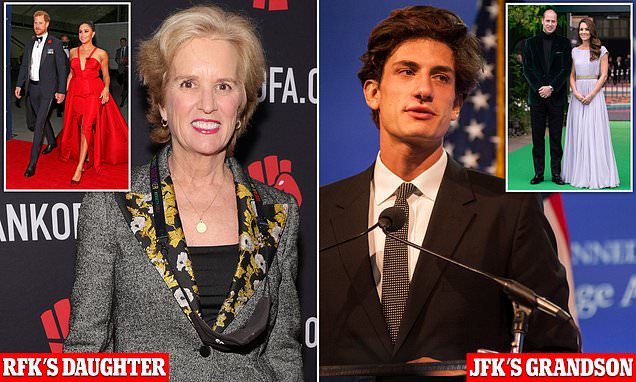In a recent discussion, the curious phenomenon of royal biographies came under scrutiny, particularly how they often pivot away from their subjects to focus on Prince Harry and Meghan Markle.
It’s a perplexing trend that has left many scratching their heads.
Why do authors who claim to write about figures like King Charles or Kate Middleton end up devoting pages to the Sussexes?
This seems to be a common thread in royal narratives, and it raises questions about the motivations behind such storytelling.
Take Robert Hardman’s biography on King Charles, for instance.
Though marketed as a deep dive into the life of the monarch, readers found an overwhelming amount of content dedicated to Harry and Meghan instead.
Hardman even used the Sussexes’ names to promote his book, which many found rather disingenuous.
This pattern continues with Robert Jobson’s recent work on Kate Middleton, where, instead of focusing on her contributions and achievements, the narrative veers off to discuss Harry and Meghan, despite the couple having stepped back from royal duties years ago.
Critics have pointed out that a biography about Kate could have highlighted her charitable work and her role as a mother.
Instead, it seems the narrative was hijacked by the ongoing saga of the Duke and Duchess of Sussex.
One commentator lamented the missed opportunity to tell Kate’s story, suggesting that Jobson should have taken advantage of the moment to showcase her initiatives, especially in light of her recent health struggles.
The criticism didn’t stop there.
Some felt that Kate’s public persona lacks substance, with claims that she is primarily known for her fashion choices rather than any impactful contributions.
A recent speech she delivered lasted under three minutes, leading to further skepticism about her ability to engage meaningfully with her audience.
Observers argue that this lack of depth might explain why Jobson struggled to fill his book with content about her.
In a surprising twist, Jobson revealed that both Prince William and Kate were reportedly envious of the public affection directed toward Harry and Meghan during their early days as a couple.
This admission is striking, as royal family members rarely acknowledge such feelings openly.
The jealousy appears to have been exacerbated by the glowing media coverage that surrounded Harry and Meghan, particularly in the lead-up to their wedding in 2018.
Jobson’s revelations suggest that William may have reacted defensively when Harry and Meghan’s engagements overshadowed his own.
For example, when the Sussexes were scheduled for an event in Cardiff that conflicted with one of William’s engagements, he reportedly made a dramatic change to his appearance, debuting a new haircut that seemed designed to draw attention away from his brother.
Such actions paint a picture of a competitive dynamic that has persisted within the royal family.
This rivalry is not just a passing phase; it appears to be deeply rooted.
Observers have noted that William’s need for validation often leads to petty acts aimed at competing with Harry.
One notable instance was when Harry visited the UK for a charity event, only for William to schedule an appearance at a similar function on the same day.
This kind of behavior raises eyebrows and suggests an ongoing struggle for recognition.
Jobson also mentioned William’s discomfort with Meghan’s connection to Princess Diana.
He sought assurances from the Queen that Meghan wouldn’t wear any of Diana’s jewelry at her wedding to Harry, revealing a deeper layer of jealousy.
While Kate wears Diana’s iconic sapphire engagement ring, William’s insistence that Meghan avoid wearing similar pieces speaks volumes about his insecurities.
Interestingly, Meghan did wear one of Diana’s pieces—a stunning aquamarine cocktail ring—during her evening reception.
This choice likely intensified William’s frustration, highlighting the stark contrast between his acceptance of Kate wearing Diana’s jewelry while objecting to Meghan’s potential homage to their late mother.
Ultimately, these insights into William’s psyche reveal a man grappling with feelings of inadequacy and jealousy.
His reactions to Harry and Meghan’s popularity suggest a desire for the spotlight that he believes is rightfully his due to his position in the line of succession.
However, as Jobson points out, the public’s perception doesn’t always align with titles and expectations.
As the narrative unfolds, it becomes increasingly clear that the dynamics within the royal family are complex and fraught with rivalry.
William’s actions, driven by jealousy and competition, serve as a reminder of the human emotions that linger behind the palace walls.
Whether these revelations will lead to any significant changes remains to be seen, but they certainly provide food for thought about the underlying tensions within one of the world’s most scrutinized families.

